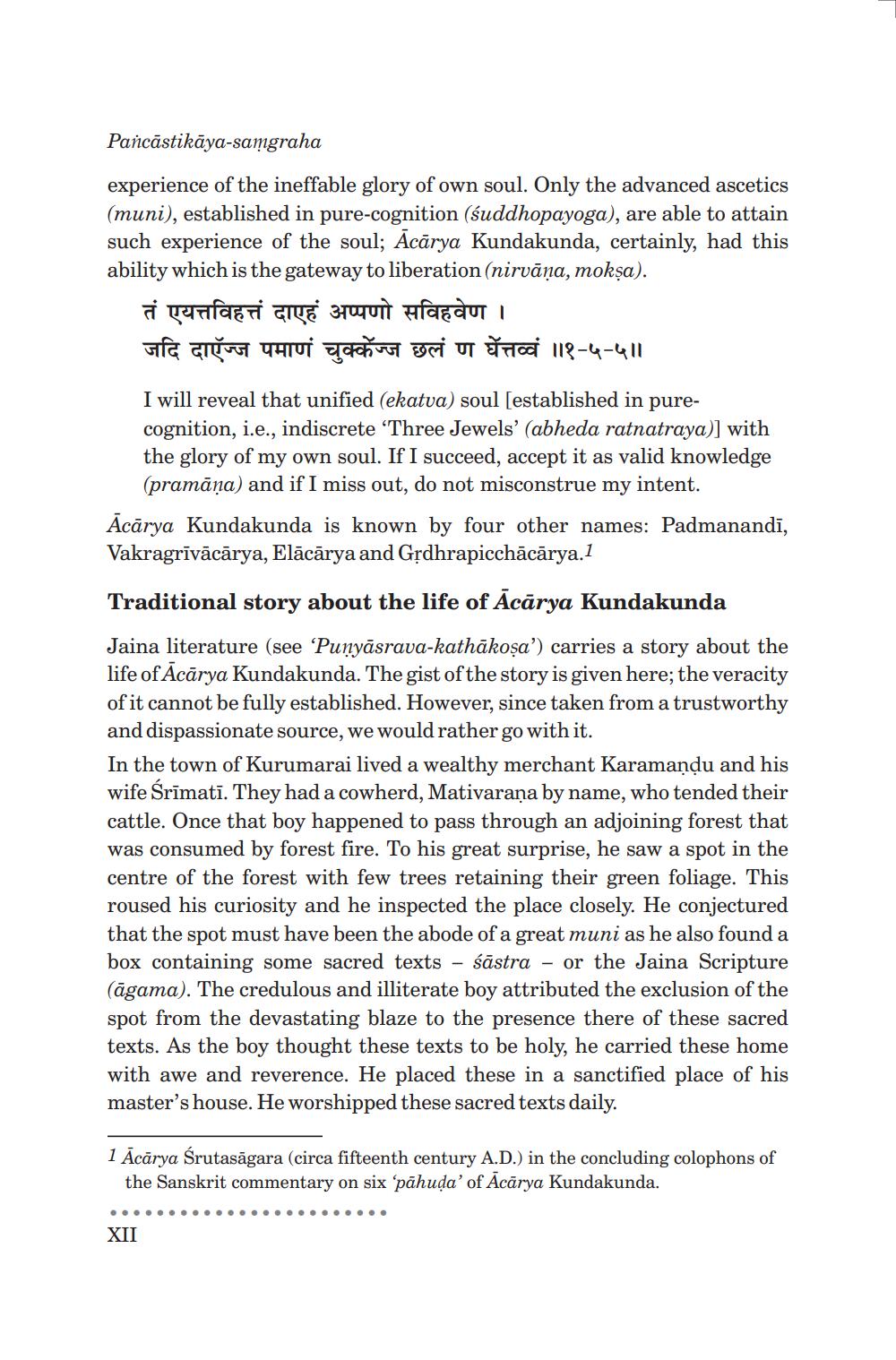________________ Pancastikaya-samgraha experience of the ineffable glory of own soul. Only the advanced ascetics (muni), established in pure-cognition (suddhopayoga), are able to attain such experience of the soul; Acarya Kundakunda, certainly, had this ability which is the gateway to liberation (nirvana, moksa). तं एयत्तविहत्तं दाएहं अप्पणो सविहवेण / जदि दाऍज्ज पमाणं चुक्केंज्ज छलं ण घेत्तव्वं // 1-5-5 // I will reveal that unified (ekatua) soul [established in purecognition, i.e., indiscrete 'Three Jewels' (abheda ratnatraya)] with the glory of my own soul. If I succeed, accept it as valid knowledge (pramana) and if I miss out, do not misconstrue my intent. Acarya Kundakunda is known by four other names: Padmanandi, Vakragrivacarya, Elacarya and Grdhrapicchacarya.1 Traditional story about the life of Acarya Kundakunda Jaina literature (see 'Punyasrava-kathakosa') carries a story about the life of Acarya Kundakunda. The gist of the story is given here; the veracity of it cannot be fully established. However, since taken from a trustworthy and dispassionate source, we would rather go with it. In the town of Kurumarai lived a wealthy merchant Karamandu and his wife Srimati. They had a cowherd, Mativarana by name, who tended their cattle. Once that boy happened to pass through an adjoining forest that was consumed by forest fire. To his great surprise, he saw a spot in the centre of the forest with few trees retaining their green foliage. This roused his curiosity and he inspected the place closely. He conjectured that the spot must have been the abode of a great muni as he also found a box containing some sacred texts - sastra - or the Jaina Scripture (agama). The credulous and illiterate boy attributed the exclusion of the spot from the devastating blaze to the presence there of these sacred texts. As the boy thought these texts to be holy, he carried these home with awe and reverence. He placed these in a sanctified place of his master's house. He worshipped these sacred texts daily. 1 Acarya Srutasagara (circa fifteenth century A.D.) in the concluding colophons of the Sanskrit commentary on six 'pahuda' of Acarya Kundakunda. ....................... XII




